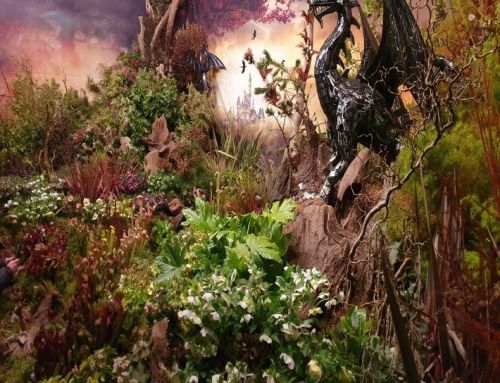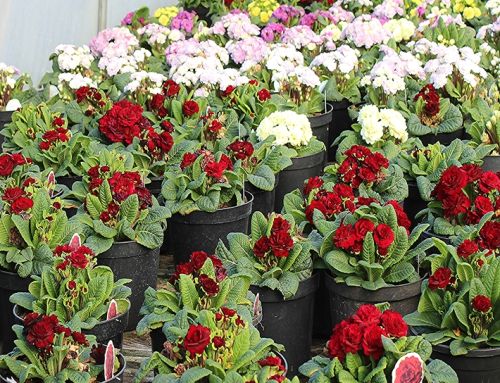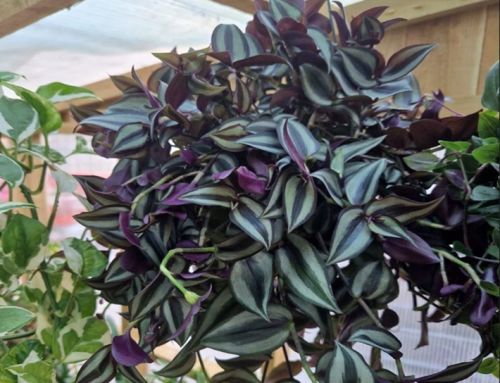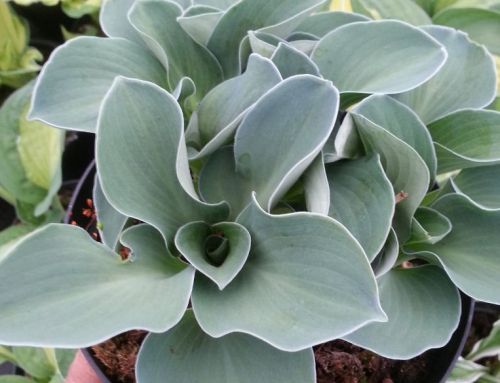Sempervivums
Sempervivums are fascinating plants. Sempervivum – means ‘always alive’, referring to the fact they are always green, and Houseleek originates from the Anglo Saxon word ‘Leac’ which means plant. The most common houseleek is ‘tectorum’, meaning ‘on roof’ this stems back to them having been grown on roofs. Why grow them on roofs though? It was said that due to them having a good water store within they would reduce the risk of fires, lending them a lot of other nicknames such as ‘roof foil’ and ‘Thunder plant’. More interestingly, it is believed that in some parts of Wales they are still to this day grown on roofs of huts to ward off the lightning, (though has to be said, as a Welsh Nursery, I can’t say I’ve noticed it myself !!!). Lightning brings me to another common nickname for them which is ‘Jupiter’s beard’ fascinatingly it all ties into this idea of lightning attacking people’s roof’s and Jupiter is of course the Norse King of the Gods and Sky and always pictured with a beard, whilst most were clean shaven. This is where the very idea of these plants protecting you came about.
 Sempervivum are very tough plants that originate from mountains all over Europe. They are very easily grown and happy in unfertile, dry arid conditions. Often referred to as Hens and chicks because of the one central rosette (the hen) that grows with multiple around it (chicks). They often produce flower stems which do provide a bad reputation as they are believed to die after this, this is partly true as that one rosette will die but as they produce so many rosettes, this is never an issue as you always have more to take over. If the flower rosette leaves a gap in your display, simply pull another chick from the edge and pop in the gap, they will root very easily. This is one reason they are so widely loved because of the wonderful display they so provide. I often think they are a wonderful plant for kids to grow as they pull off and root in easily and are fantastic little plants to use in fairy garden features. They do need a dry situation and will not thrive if left sitting in water. It is best to plant them at an angle so the water can simply roll off them.
Sempervivum are very tough plants that originate from mountains all over Europe. They are very easily grown and happy in unfertile, dry arid conditions. Often referred to as Hens and chicks because of the one central rosette (the hen) that grows with multiple around it (chicks). They often produce flower stems which do provide a bad reputation as they are believed to die after this, this is partly true as that one rosette will die but as they produce so many rosettes, this is never an issue as you always have more to take over. If the flower rosette leaves a gap in your display, simply pull another chick from the edge and pop in the gap, they will root very easily. This is one reason they are so widely loved because of the wonderful display they so provide. I often think they are a wonderful plant for kids to grow as they pull off and root in easily and are fantastic little plants to use in fairy garden features. They do need a dry situation and will not thrive if left sitting in water. It is best to plant them at an angle so the water can simply roll off them.
 Available in an array of colours from oranges to purple! Of the purples ‘Intensity’, ‘Pacific Purple Shadows’ are among the most striking, with their wonderfully intense colour and both being able to grow large rosettes. ‘Cmirals Yellow’ is an impressive variety, understated yet it has a bold intense yellow hue to it with tightly woven rosettes. ‘Gold Nugget’ is a very impressive variety with yellow orange and bright red tips, it really stands out. You then have the two tonal varieties such as calcareum and ‘Star Sirius’ which are also very bold and create nice patterns when planted with others. The arachnoideum types have wonderful webbing over them, that makes them look as if spiders have been all over them!! We do also have beautiful red varieties of these such as ‘Red Spider’ and ‘Flaming Web‘.
Available in an array of colours from oranges to purple! Of the purples ‘Intensity’, ‘Pacific Purple Shadows’ are among the most striking, with their wonderfully intense colour and both being able to grow large rosettes. ‘Cmirals Yellow’ is an impressive variety, understated yet it has a bold intense yellow hue to it with tightly woven rosettes. ‘Gold Nugget’ is a very impressive variety with yellow orange and bright red tips, it really stands out. You then have the two tonal varieties such as calcareum and ‘Star Sirius’ which are also very bold and create nice patterns when planted with others. The arachnoideum types have wonderful webbing over them, that makes them look as if spiders have been all over them!! We do also have beautiful red varieties of these such as ‘Red Spider’ and ‘Flaming Web‘.
There are always new varieties to collect. They become a plant you must collect because they are addictive! We  have some wonderful varieties here at the nursery, particularly popular now is ‘Golden nugget’, however varieties such as ‘Pacific Purple Shadows’, ‘Extra’ and ‘Antiquity’ are among my own personal favourites.
have some wonderful varieties here at the nursery, particularly popular now is ‘Golden nugget’, however varieties such as ‘Pacific Purple Shadows’, ‘Extra’ and ‘Antiquity’ are among my own personal favourites.
So how do you get Giant rosettes?? Some varieties will grow giant rosettes, given the correct amount of drainage and direct sunlight, you will get your sempervivums to look like a masterpiece.
Due to the fact Sempervivums are very easily rooted, they lend themselves to becoming a great plant to be creative with, from creating living walls to living artwork. If you have ever seen displays of Sempervivums at RHS shows, you will have noted that they are often used in a wired type of display, sometimes made into a shape, I’ve seen dogs, dinosaurs, cats the lot. Another fantastic display is when made into a hanging basket ball, providing wonderful carefree decoration outside. I particularly like the idea of this hidden alcove, keeping the sempervivums dry and drained but also giving them the warmth from the wall. It would work well if trying to hide an ugly exterior wall.






